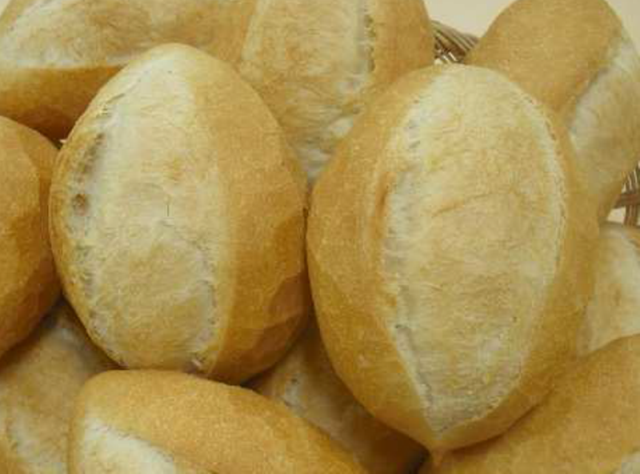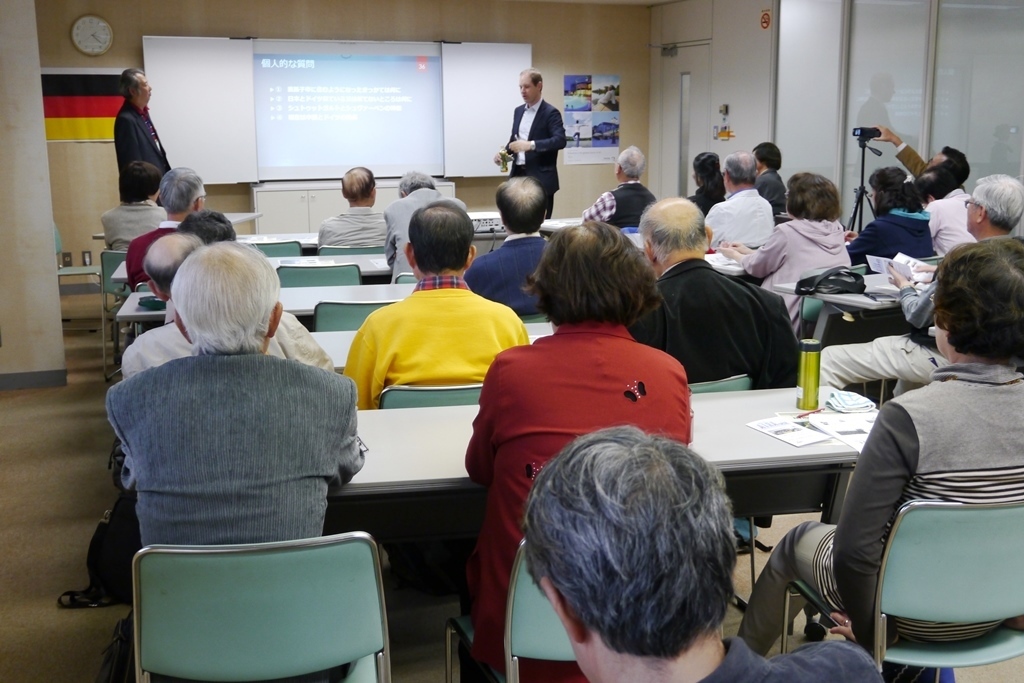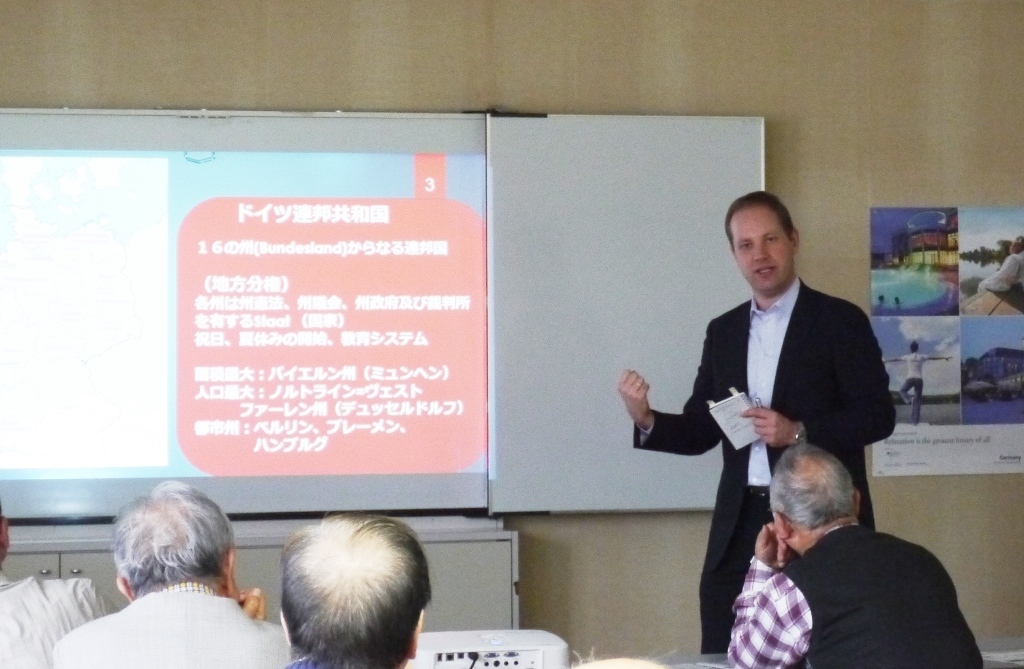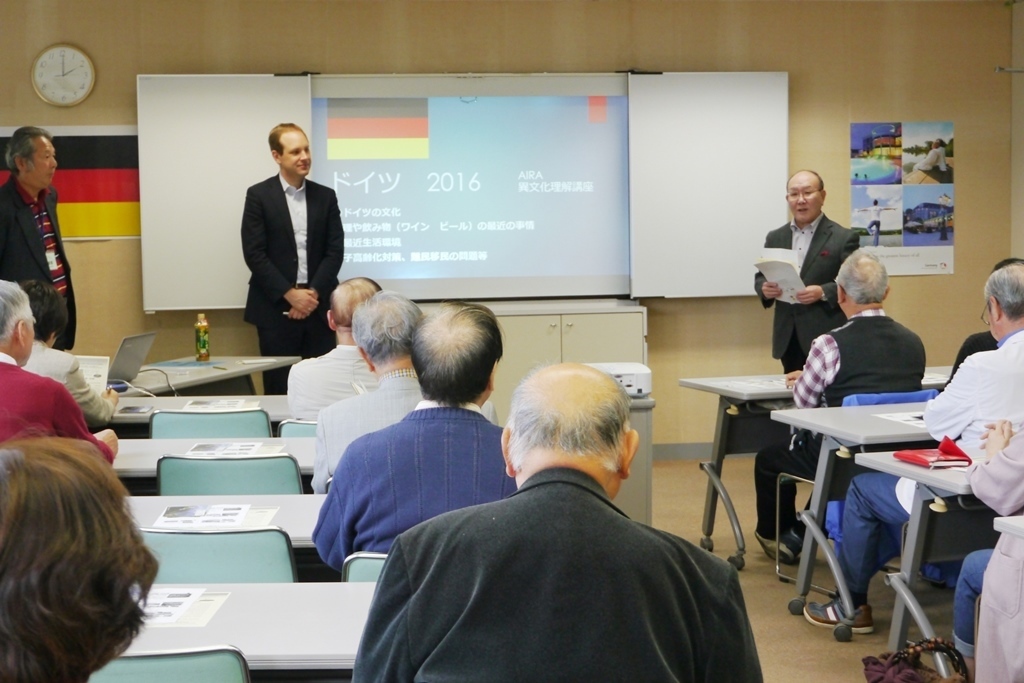Lecture on “Germany 2016” – Cultural Study Class
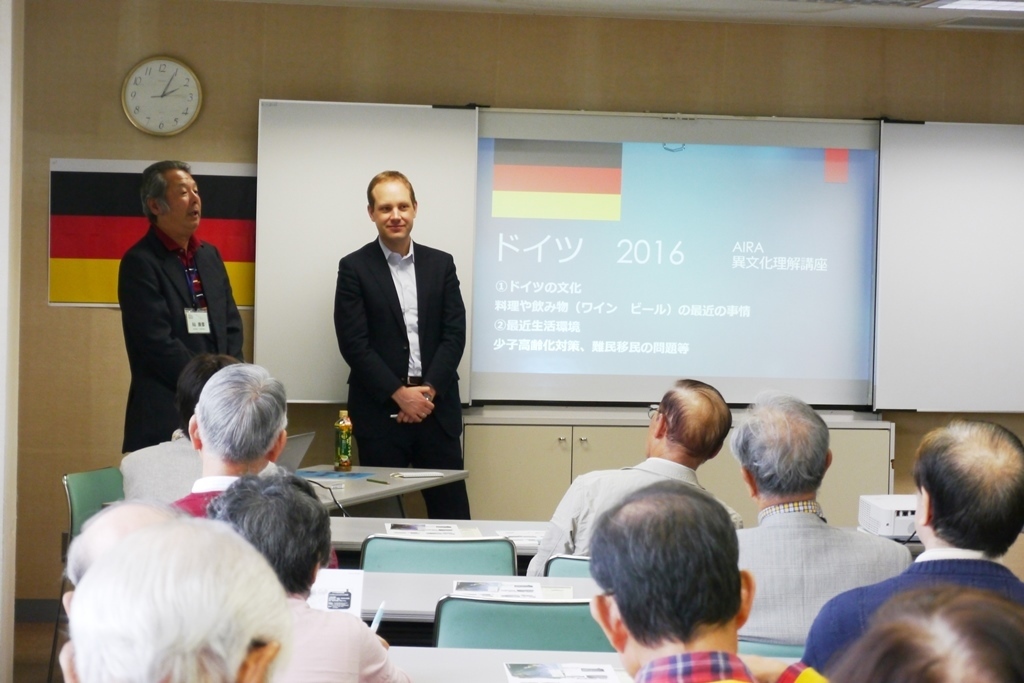
Mr. Roth gave his speech in Japanese as follows.
Date/Time: Saturday, October 29, 2016 2:00p.m.-4:00p.m.
Venue: Abiko Civic Plaza, Meeting Room No.1
Lecturer: Mr. Joerg Roth from Stuttgart, Germany, now living in Abiko
Participants: 31people and 4 AIRA staff (Beppu, Tabuchi, Arai, Hesaki as MC & Assistant)
1. German culture in Food and beverages
a) Bread (Brot): There are more than 1,000 different kinds of bread in Germany. Of them, so-called small and round “Brotchen” is quite popular for the breakfast and is often taken for lunch in a sandwich form simply with cheese or ham, just like Onigiri (rice ball) in Japan.
b) Meat (Fleisch): People eat meat almost every day, whose average annual consumption is 83kg per person (45kg in Japan). Pork is preferred to beef and its processing food such as ham and sausage has more than 1,500 different kinds varying in size, shape and color according to region.
c) Cakes (Kuchen): There are many kinds of cake and cookies, especially cakes using fruits are popular. The Baumkuchen quite well known in Japan as a typical German cake, is not so familiar in Germany. Many Japanese living in Germany are disappointed as unable to buy it easily there.
d) Beer (Bier): There are so many different kinds of beer in Germany, which are roughly classified into two types. One is the upper fermentation type, which is rather old style and normally drunk in an ambient temperature. The other one is the bottom fermentation type, known as a lager beer. In Germany there is an old low called German Beer Purity Low (enacted in 1516) which defines beer to be made of only 4 ingredients, namely, malted barley, hop, yeast and water. Japanese beer normally contains starch and corn as well, which means it’s not a beer in the German low. The alcohol tax placed on beer is quite low, therefore beer in Germany is cheap, roughly 60 yen per 300ml can.
e) Wine (Wein): Wine is produced mostly in the south-western area in Germany. Traditionally more white wine is produced than the red one. There are unique bottles in shape and color depending on the region. The very new wine called “Federweisser” (white feather) having turbidly white color has quite fresh and a bit sweet taste. However, the wine is still under fermentation process generating carbon dioxide gas and therefore it can be produced only in October and in the limited wine areas.
2. Recent living environment in Germany
a) Problems caused by immigrants and refugees, that account for 20 % of the total German population, are the issues from which Germany can’t escape due to a shortage of labors after the World WarⅡand the declining birthrate followed. The recent aging population combined with decreasing number of children is making the population distribution pyramid clearly change to a contracting type. This is the background that Germany has no choice but accepts immigrants and refugees
b) Because of the aging population the annuity recipients are increasing year by year. In spite of declining birth rate, a shortage of nursery schools is serious problem in urban areas, which is similar to Japan.
c) Income tax is quite high in Germany, nearly 42 % for an average worker. In addition many insurance premiums such as unemployment, healthcare and pension plan impose on the income. As a result the real net income becomes half of the paid wages, however, social welfare such as single mother supports and the child care allowance is substantial, which means Germany is a country of “high benefits for high burden”.
After the lecture, question and answer time was carried out.
Q1. What’s the difference between German and Japanese?
Ans. Whereas Japanese are generally timid in mentioning their opinions, German people express very straight forward.
Q2. What are difficulties in learning Japanese?
Ans. Since Japanese people often omit subject in conversation, foreigners do not understand whose phrase it is. Also, polite expression is too complicated and difficult to understand. As to the Chinese characters it is not so difficult because PC can transcribes Hirakana automatically into Kanji.
During the lecture, a lot of pictures and key words were shown on the projector screen, which greatly helped the audience’s understanding. (No. 16-19 Translated by Y. Hesaki)

